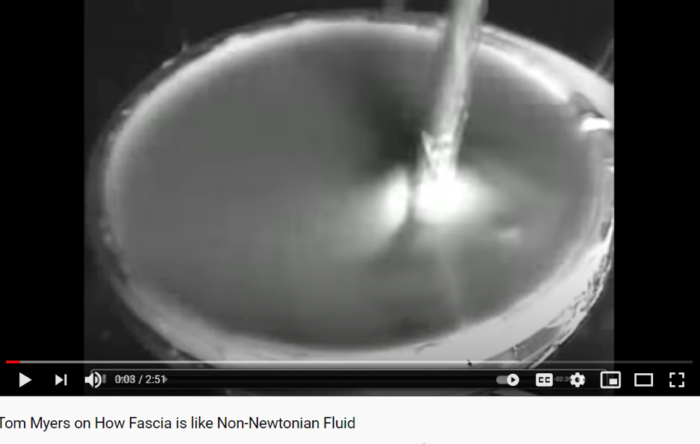Non-Newtonian fluid, self-regulating organism or ‘tropical wet jungle’?
In the video below, anatomy legend Tom Myers demonstrates what happens to non-Newtonian fluids like fascia when then are agitated – explaining why there may be unexpected consequences of bodywork in autoimmune disease.
A non-Newtonian fluid is something like ‘custard’ and many of us will have seen those experiments where a swimming pool is filled with ‘custard’ – mostly cornstarch – and depending on whether you stand still or walk it behaves as either a liquid or a solid. This property is called thixotropic and it is this property which can account for some of the changes possible with fascial work.

Click link here
Researcher Robert Schleip, though, believes we must go beyond the thixotropic properties and piezoelectric properties to understand what is going on with fascial work. He invites us to look at the way fascia is innervated, “Rather than picturing the nervous system as a hard-wired electric cable system – which in the view of many bodyworkers is then, of course, incapable of being involved in more subtle energetic phenomena – picture it in your mind’s eye as a wet tropical jungle”. Fasciae are rich in four types of mechanoreceptors. Each type has a preferred location and is responsive to a different type of manual manipulation. When stimulated, each type of receptor has a different effect on the body and so different types of pressure and bodywork will elicit different response.
Research is also proving fascia to be more ‘alive’. It seems fascia may even have muscle-like contractile properties. Smooth muscle-like cells were found within the fascia cruris back in 1996. Ultimately this shift is from the body as a mechanical object to the body, and fascia, as a self-regulating organism.Read Robert Schleip’s chapter on “Fascia as a sensory organ” here.